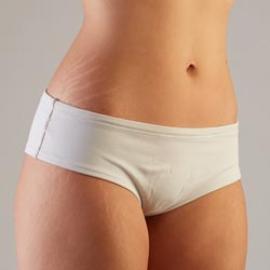
The gastric balloon is a surgical method that allows people with obesity to lose weight while teaching them how to eat better and adopt a better diet.
Treatment: the intragastric balloon
The intragastric balloon is designed for people with a Body Mass Index (BMI) of 27 or more and who suffer from obesity.
It is undeniable that diets themselves rarely change dietary habits in the long run. Many people are in a cycle of weight loss and weight gain, from one failed diet to another, experiencing the famous yo-yo effect. Others use slimming drugs or appetite suppressants, which are difficult to tolerate in the long term due to their side effects, while the gastric balloon allows to lose a lot of pounds.
The gastric balloon will help you lose a lot of pounds.
The course of the procedure
The surgery is performed under local anesthesia during an outpatient stay. The intragastric balloon is placed and removed during an endoscopic procedure lasting between twenty and thirty minutes.
Implementing the gastric balloon
The deflated balloon is attached to a flexible tube and then inserted into the stomach through the mouth with an endoscope. Once the balloon is in position, a small tube is injected with a physiological solution (salt water). When the tube is removed, the balloon is sealed automatically. The volume of filling varies from 400 ml to 700 ml to fit a large number of people.
A blue dye is added to the physiological solution that is injected into the flask so that, in the rare event that the balloon leaks, the patient immediately notices a change in the color of their urine. If this happens, they should contact the doctor immediately so that the balloon can be removed safely.
The balloon is positioned in the stomach for up to six months. The nutritionist provides the dietary advice and support needed to help the patient change their diet and lifestyle.
Removal of the stomach balloon
Using an endoscope and a small tube, the doctor eliminates the saline solution from the balloon before removing the deflated balloon from the stomach.
Removal of the stomach balloon
Using an endoscope and a small tube, the doctor eliminates the saline solution from the balloon before removing the deflated balloon from the stomach.
Recovery
The patient will rest for one to two hours for observation before they can leave the clinic.
During the first days, while the stomach adapts to the balloon, the patient might feels discomfort. Nausea, bloating, diarrhea, and cramping may occur. These side effects are both temporary and normal. If necessary, the doctor will prescribe the appropriate drug treatment for better control.
It is advisable to have a rest and not to do any physical exercise for 24 hours.
There is then a six-month nutritional follow-up. The first step: drink small amounts of cold liquids, starting with a teaspoon, and then slowly increase the amount of liquid.
Week 1: Fluid-only diet
The first few days are uncomfortable since the stomach has to get used to the presence of a balloon. The total consumption of liquids (water, fruit juice, clear soups, milk, etc.) must be more than 2 liters per day. The patient may use a meal replacement for one week to help them obtaining daily calories and protein.
Week 2: Puree foods, soft and strong
The stomach begins to adjust to its new size. The change from puree food to solid food takes about a week, but progress is only if the body accepts the next step of food.
- Mashed food for three days: once the stomach has been liquid-adapted, the patient can start eating mashed food.
- Four days of soft food: this step readies the patient to return to solid food. It is recommended to eat slowly, chew hard foods and choose foods that are low in fat, calories and carbohydrates.
- Solid food: this is the final stage of the food transition. The patient resumes normal activities and begins to rehabilitate their appetite to maintain a healthy weight loss. The patient has to drink plenty of water and avoid drinking and eating at the same time. It is encouraged to consume at least one glass of water 1⁄2 hour before each meal and two glasses of water 1⁄2 hour after each meal in order to rinse the balloon.
- The following six months: the patient must follow a diet to evaluate his or her weight gain.
The results
Patients can expect a significant weight loss of between 33 and 44 pounds over the next six months. Sustained success is conditioned by a patient's dedication to healthy eating, reduced portion size and active lifestyle. Patients find it easier to sustain their weight loss over a longer period of time compared to diets alone.
The price of a gastric balloon
Local anesthesia
Ambulatory stay
|
Label colonne description
Other fees
|
Label colonne tarifs
Price*
|
|---|---|
|
Description
Consultation with the surgeon |
Tarif
$50
|
* Price as an indication, fees, may vary from one practitioner to another.




















































